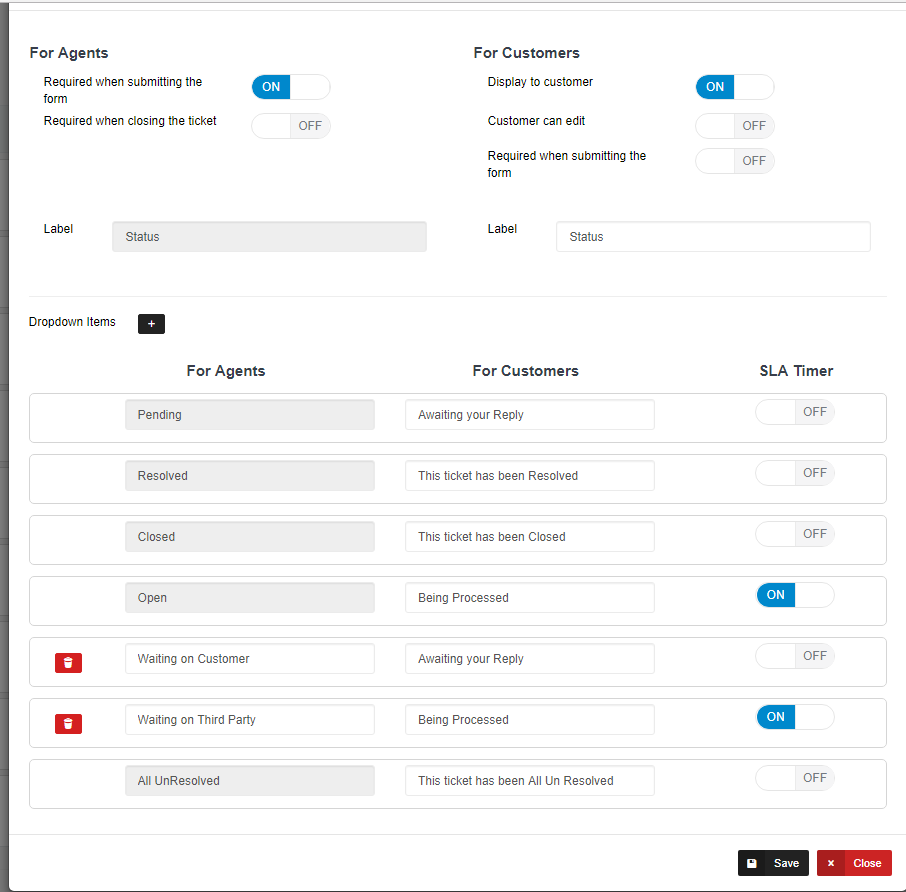Ticket can have different statuses to manage the life cycle of a ticket. Default ticket statuses are: Open, Pending, Resolved and Closed.
Default Ticket statuses cannot be deleted. You can add custom ticket statuses from Ticket Fields > Status > Dropdown Items > +.
SLA Timer
By default, an SLA timer starts ticking with every ticket the moment it gets created. This is used to let you know when the ticket is due to be resolved and is managed by the way you have defined your SLA policy under SLA Policies.
However, sometimes, your team will be in a situation where they aren't in control of what's happening. And as they wait for more information from the customer or for assistance from a third party, the ticket timer would continue to run down, eventually leading to an SLA violation. To avoid such problems, you can create a custom status called "Waiting on Third Party" and turn off the SLA timer for it (just like you do for the Pending status). That way, your team will be able to use it and make sure that their ticket aren't affected by these situations.
Similarly, you can choose to “freeze” the SLA timers with each custom status by turning the corresponding timer “Off”. All tickets with the SLA timer turned off will be marked as “On Hold”.
Default Statuses
Open - This is the default status of a ticket when it is created.
Pending - A ticket can be moved into pending when an agent has replied to a ticket and is waiting to get more information from a customer. By default, SLA timers are turned off for pending tickets because you don't want to face any violations when you are waiting on your customer. Sometimes, it can also be used with tickets that are on hold because of any third-party constraints that cannot be controlled by the support teams.
Resolved - When your agents are reasonably sure that they have provided the right solution to a customer, they can mark it as resolved. Once they do, the ticket can remain with the same status until the custom confirms that his issue has been fixed, upon which the ticket can be marked as closed.
Closed - A ticket gets closed when a requester acknowledges that his issue has indeed been resolved by the customer. However, even if the ticket has been marked as closed, it will move back into open if the customer replies to it again.

